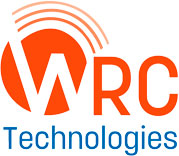Wireless Research Center Completes Successful Proof of Concept Experiment for NOAA, Seeks Funding to Support Commercialization
WAKE FOREST, N.C. (June 22, 2021)
The National Oceanic and Atmospheric Administration’s National Severe Storm Laboratory contracted with the Wireless Research Center to conduct applied research to enable potentially improved weather predictions using cellular network signals to measure humidity.
The WRC completed a year-long project demonstrating the proof of concept for signals from existing 4G base stations to provide humidity measurements. The same technique also works with 5G base stations. The process uses existing information within 4G and 5G signals to monitor signal amplitude and phase to measure humidity along the path from the base station to the monitor.
Weather researchers and forecasters were excited about the concept of using wireless signals to measure humidity after NOAA’s National Severe Storm Laboratory (NSSL) in Norman, OK and the WRC presented the concept at the American Metrological Society’s annual meeting in January 2020. Conventional humidity measurements through sensors at sparsely located weather stations provide point samples over a large area. For weather forecasters, the small number of samples is like trying to form a picture from a handful of pixels.
The new method can potentially contribute to earlier forecasts and warnings for severe weather, including tornadoes, said Mark Weber. This could be accomplished by assimilating the fine scale humidity observations into a high-resolution numerical weather model, then using the model forecasts to assess the probability of future severe weather. The NSSL experimental “Warn on Forecast System” (https://www.nssl.noaa.gov/projects/wof/), developed to increase warning lead-time for severe weather and tornadoes, is an example of such a system. Current techniques using Doppler radar can alert people about 15 minutes prior to a tornado. If the warning lead-time can be extended significantly, casualties could be averted through more effective public response.
Weber said observing low-altitude humidity in the air, with more frequent measurements in more locations, could be a valuable input to the model-based warning systems. In parallel with WRC’s research on a practical, low-cost measurement method, NSSL is conducting research to quantify the accuracy of humidity measurements from cell-tower microwave signals, and to assess their benefits for the model systems.
As a research scientist with the NOAA National Severe Storms Laboratory, Weber initiated the research with the WRC after hearing a 5G presentation by the WRC’s founder and chief executive officer Gerard Hayes to an advisory panel for the Federal Aviation Administration. Weber is now a senior technical staff member at the Massachusetts Institute of Technology Lincoln Laboratory.
The measurement process can be deployed quickly wherever cellular service is available. “The data already exists in the 4G and 5G signal protocols, and we are extracting the data to show how humidity levels change along the course of the signal path,” said WRC Senior Staff Engineer Mike Barts. “We are simply using the cellular network to tell us what is going on along the path. We can glean humidity levels from the existing data.”
The measurements work with 4G signals and are even more effective with the higher frequencies involved with 5G which require more cell towers. Barts said the proof of concept experiment in a lab demonstrated the potential. The WRC is seeking additional funding for additional field testing needed to commercialize the technology.
About the Wireless Research Center
The WRC is a nonprofit organization supporting clients globally with unique applied research, engineering services and testing for communication technologies. The WRC accelerates the rate of scientific innovation as a network design and Internet of Things (IoT) consultant and certified testing facility for the CTIA and many wireless network providers. The WRC fosters innovation and collaboration among commercial partners, industry groups, academic institutions and research organizations. The WRC is leading the deployment and operation of advanced wireless 5G testbeds for the nation’s third advanced wireless research platform supported by an industry consortium and a $24 million grant from the National Science Foundation. Initial testbeds for autonomous drone and mobility systems are being developed in North Carolina’s Research Triangle Park region. For more information, visit www.wrc-nc.org
Media Contact
Scott Yates (for WRC & The Collective)
919-649-6621
scott@onpointprgroup.com
